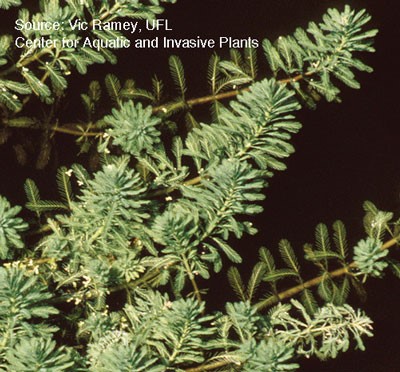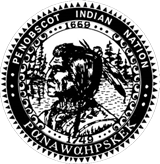Community News

Parrot Feather
Description: Long unbranched stems arise from roots and creeping underground stems. Unburied creeping underground stems function as a support structure for unusual roots, and provide resilience for developing growth. Developing stems may grow to a height of 30 cm above the water surface. Slender, feather-divided leaves occur along the trailing stems in groups of 4 to 6 leaves. Groups are openly spaced toward the base, and more closely arranged toward the growing tip. The developing leaves are hearty, vibrant green, and covered with a waxy coating. Underwater leaves, in contrast, are limp and brownish, and often in a state of deterioration. Small white flowers (female only) are hidden.
Habitat: Parrot feather is found in both the developing and the underwater plant communities of freshwater lakes, ponds, and slow moving streams. It is also adapted to waters with some salinity. While it grows best when rooted in shallow water, it has been known to occur as a floating plant in the deep water of nutrient-enriched lakes. It is well adapted to life at the water’s edge and can survive when stranded on dewatered river banks and lake shores.
Annual Cycle: Parrot feather is an water perennial that grows through root division and broken plant pieces. Plants usually flower in the spring but fall flowering also occurs. Male and female flower parts occur on separate plants, and male plants are only known to occur in the plant’s native range. As a result, parrot feather populations in the United States do not produce seeds. Plants die back to their creeping underground stems toward the end of the growing season. New shoots begin to grow rapidly from overwintering creeping underground stems as water temperatures rise in the spring.
Origin and U.S. Range: Parrot feather is native to South America, and is considered invasive in the United States. Nearby populations occur in New York and Rhode Island. Parrot feather is not known to be present in Maine waters.
Look a likes: When developing stems and leaves are not present, parrot feather may be confused with bladderworts, hornworts, mermaid weeds, water crowfoots, and other leafy water-milfoils.
